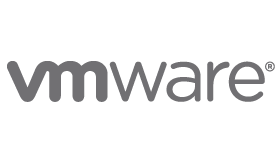VMware has revealed the updated vFabric Suite 5.1, which includes new capabilities that automate the deployment and management of complex applications on VMware cloud infrastructure.
The introduction of an in-memory distributed SQL database, VMware vFabric Suite 5.1, provides the core application services required to build, run and manage Java Spring applications whether on-premise or in the cloud.
Cloud Apps
“The cloud era is driving a transformation in applications,” said Jerry Chen, vice president of Cloud and Application Services at VMware, in a statement. “Today, most are built with open-source development frameworks, deployed on lightweight application containers, run on virtual infrastructure and are data-intensive. This is driving a real transition in the type of technologies our customers are using to build, run and manage these new applications.”
The VMware vFabric Suite seeks to address the complexity and cost of traditional Java platforms, providing a simple, lightweight development and runtime optimised for VMware cloud infrastructure. By combining the Spring development framework, the latest generation of vFabric application services and a “per-virtual-machine” licensing model, vFabric Suite 5.1 provides the core application platform for building, deploying and running modern applications, said David McJannet, director VMware’s Cloud and Application Services group.
 “There has been a big shift in the way applications are being written, mostly by using frameworks – with Spring being the main one used by Java developers,” McJannet told eWEEK.
“There has been a big shift in the way applications are being written, mostly by using frameworks – with Spring being the main one used by Java developers,” McJannet told eWEEK.
The VMware vFabric Suite now includes support for the open-source runtime components most frequently used in production deployments of Spring applications, including Apache Tomcat, Apache HTTP Server and RabbitMQ messaging, the company said. VMware took this approach to help simplify the adoption path of vFabric technologies for organisations using these open-source components today.
“A good example of this is Instagram,” McJannet said. “Instagram was built using an open-source framework, database and in-memory cache. Five to seven years ago that would likely have been built with Oracle.”
To reduce database costs and increase agility, vFabric Suite 5.1 includes vFabric Postgres, a VMware-optimised relational SQL database. vFabric Postgres is compatible with open-source PostgreSQL, enabling customers to leverage existing standard PostgreSQL tools. vFabric Postgres comes as a virtual appliance and has virtualisation optimisations such as elastic database memory to share database memory pools and smart configuration to reduce tuning time after resizing virtual machines.
To drive greater efficiency and better performance, vFabric Suite now includes vFabric Application Director and vFabric Application Performance Manager. vFabric Application Director automates the deployment of applications through easy-to-use blueprints with standardised templates, component libraries and workflows, the company said. vFabric Application Performance Manager provides comprehensive monitoring of end-user transactions, Java code, middleware servers and vSphere hosts, enabling customers to proactively manage application performance, find and fix problems quickly, and meet service-level agreements (SLAs).
Data Management
Moreover, McJannet said many of today’s mobile and Web-oriented applications must support highly variable access patterns, putting pressure on the database-only approach to data management.
To support this evolution, in-memory databases have emerged as a standard component of the core technology stack developers use. VMware vFabric SQLFire is an in-memory distributed SQL database built on the strength of vFabric GemFire. vFabric SQLFire delivers dynamic scalability and high performance for modern, data-intensive applications, all accessible through a familiar SQL interface. By pooling memory, CPU and network resources across a cluster of machines, vFabric SQLFire eliminates the main performance bottleneck in traditional databases – disk access. vFabric SQLFire can manage data across regions, accelerating application performance, minimising latency and increasing reliability. vFabric SQLFire Professional is now included in the vFabric Suite 5.1.
McJannet said vFabric Suite 5.1 is also packaged and licensed to allow enterprises to purchase application infrastructure software based on virtual machines, rather than physical hardware, and to pay only for the average number of licenses in use. This model eliminates the need for organisations to purchase excess software in anticipation of peak loads, incurring significant costs and allowing software licenses to sit dormant outside of peak periods.
VMware said vFabric Suite 5.1 is expected to be available in Q2 2012. It will be licensed per VM with prices starting at $1,500 (£929) per VM. VMware vFabric SQL Fire is now available, and is licensed per VM with prices starting at $2,500 (£1,548) per VM, when purchased as part of VMware vFabric Suite Advanced.
So, what do you know about the cloud? Take our quiz.




